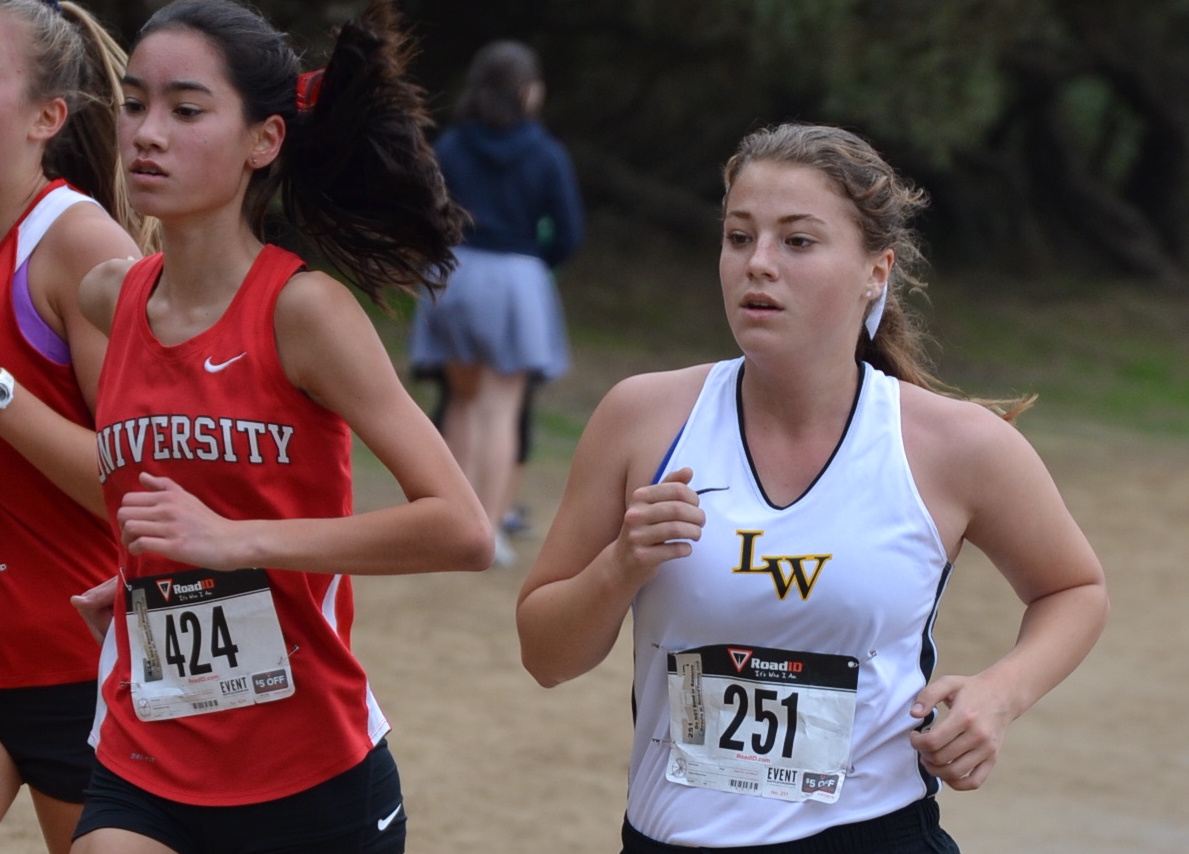
photo courtesy of LWHS Volunteer and Sports Wiki
On the afternoon of September 26, 2018 the women’s cross country captains held a team meeting after practice. The team gathered in a circle in the Lower Fishbowl, kinesiology tape clad legs crossed, patiently awaiting the start of a conversation long-overdue; a formal acknowledgement of the team culture regarding body image, a prevalent and often taboo issue facing many Lick-Wilmerding student-athletes.
Lick student-athletes representing a variety of sports note that an ideal body type tends to assumed for their respective sports. “The image in my mind of what a runner should look like is someone who is super thin, but also has a ton of lean muscle,” said Mia David ’19, a women’s cross country captain and track runner.
Student-athletes shared that they have often gone to extreme lengths to obtain what they perceived was the ideal body for their sport, measures which paradoxically hindered their athletic performance. Caitlin Cummings ’20, a women’s varsity volleyball player, noted that when she would not eat enough or skip meals in an effort to be smaller, her athletic performance went down for “obvious reasons.”
What Cummings perceived as a physical change that would allow her to be faster, jump higher, and look more like her teammates left her without the nourishment and energy necessary to excel. Sadie Ray Smith ’19, a women’s cross country captain and track athlete, similarly noted that “The year that my body looked the most like ‘a runner’ was the year I ran my worst.”
Mira Terdiman ’20, another women’s cross country team captain, track athlete, and two time BCL champion, said losing weight can be misleading to runners. Often, when runners first lose weight, they do get faster. Yet as they continue, they are left weak, prone to injury, and can even face life threatening health complications.
An example of this burnout is what the National Eating Disorder Association calls the Female Athlete Triad. The lack of nutrition resulting from disordered eating causes amenorrhea (the loss of menstrual periods), which leads to calcium deficiency and bone loss, exponentially increasing an athlete’s risk of osteoporosis, stress fractures, and other injury.
Furthermore, athletes of any sex who don’t adequately fuel can experience severe electrolyte imbalances and malnutrition syndromes, which are extremely dangerous.
“Eventually your body just breaks down,” said Terdiman. The myth equating weight loss with speed is dangerously easy to believe. “You kind of have to personally experience [it],” Terdiman explained, to entirely understand it’s not true.
Smith elaborated on this struggle to accept the falsity of the all too common weight-loss rhetoric. She said, “I’m a normal weight. I’m healthy—I run six days a week. I’m not fat, I wear a size small. I know that I’m fast—and getting faster. Yet as I move through high school I feel like I’m getting fatter, slower. Even though that’s not true, I don’t know how to reconcile facts with how I think of myself.”
Student-athletes expressed that greater athletic success and visibility in the Lick community actually negatively affected their body confidence. When Cummings started having more people come to watch her play, she began thinking more about what her body looked like. “You’re wondering what they are thinking about, about what you look like rather than how you play,” she said. “I started thinking, ‘oh, I should be skinner instead of more muscular.’”
Several athletes said their required team uniforms make them uncomfortable and less confident in their physical selves.
Olive Maunupau ’20, a member of the women’s varsity tennis and basketball teams, mentioned not wanting to play on the more visible front tennis courts because she felt uncomfortable with the way her body looked in the school-issued tennis dress. “For me, wearing those uniforms and being surrounded by your whole team in those uniforms, it’s kind of hard in that environment to not focus on what you look like when you play,” Maunupau said.
She felt that the tennis team was not very including of athletes of all sizes. “They only had 3 medium [sized] dresses. The rest were smalls and extra smalls,” Maunupau said.
Having to order another size medium uniform felt like an inconvenience, making a big deal out of small details, she said.
Meanwhile, the basketball uniforms-comprised of looser tanks and shorts, almost identical to the boy’s team’s uniforms-were much more comfortable, Maunupau said. The difference between the two uniforms changed how she felt when she played the two sports. “I feel much more visually focused on in tennis, and less on talent…I don’t think we realize the negative connotations of our team uniforms.”
Athletes mentioned that coaches and team leaders have incredibly powerful positions when it comes to fostering positive body image and eating.
When Cummings joined the track and field team as a fun new activity, a coach told her that she could throw because her size would give her momentum, but that she didn’t have the body to do jumps. She said that was shocking to hear from a coach, especially at Lick, where peoples of all body types play sports for pleasure rather than competitive excellence..
When Smith was a sophomore, she recalls that watching her team captains under-fuel and hearing them make negative comments about their bodies really affecting her. “I heard comments they would make about themselves, and I would think to myself, if you look like that, and you are supposed to be overweight, than like, what am I? What am I doing?”
Matt Drew ’20, who runs men’s cross country, track, and plays on the varsity men’s soccer team, noted that this issue doesn’t appear as prevalently on mens’ athletic teams.“Body image has never really been something we’ve focused on on the guys’ side. We just try to focus on being inclusive of everyone,” he said.
Marc Eidelhoch ’20, who also participates in men’s cross country, varsity soccer, and track, added “Inclusivity helps a lot to keep this a positive environment. And that starts with captains and coaches.”
Is it the responsibility of coaches, or the school, to address body image issues?
David believes it is absolutely the school and coaches’ responsibility to advocate for healthy bodies. “It’s affecting the [cross country] team negatively.”
Smith added that while Health and Wellness class covered a lot, it did not touch on nutrition and body image.
When student-athletes were asked what Lick could do better to encourage healthy body image among its students, the most common response was that students wished people were more vocal.
Terdiman said that coaches need to be more explicit that, at least for her team, body image and eating disorders are a very prevalent issue.
Cummings said that she wants people to know that eating disorders, and disordered eating in general, are not rare. “You don’t need to be able to see your bones to have an eating disorder,” she noted.
Terdiman said that if coaches won’t address body and eating issues, team captains or student leaders need to set aside specific times to talk with athletes, like the one she co-facilitated in September. This year, Terdiman also founded “Girls Eat Lunch Club” to form a community of people who are “well informed and eager to discuss” eating disorders. “The lack of discussion surrounding eating disorders and body image just contributes to it’s stigmatization… Because I think that if it’s not talked about people feel really ashamed about it and then won’t be able to get help,” Terdiman said.
While many students shared stories that are distressing and unfortunate, the narrative of body image and student-athletes at Lick-Wilmerding is far from despondent. The student-athletes interviewed are leaders in their team communities. They want to let their teammates know that it is “okay” to struggle with body image. The “I love my body” talk in popular media can be positive, but Terdiman wants people to feel comfortable acknowledging that they are suffering. Only then, she says, can people move forward.
All these student-athletes are leading by example. They have pledged never to criticize themselves in front of teammates, and many emphasized that by simply taking care of themselves and stressing the importance of knowing their bodies’ needs, they can create a more positive team culture. They also want each other to know that they have the power to change the dialogue surrounding body image. They emphasized that for student-athletes, your body is a tool to excel and thrive.
“Your body does not define you,” Cummings said. She urged her fellow student-athletes to “focus on what your body does for you.” That mentality “saved me from going down a super bad spiral with the point I was at with my body” Cummings said. “It made me accept what my body looked like, who I was, and who I wanted to be.”







